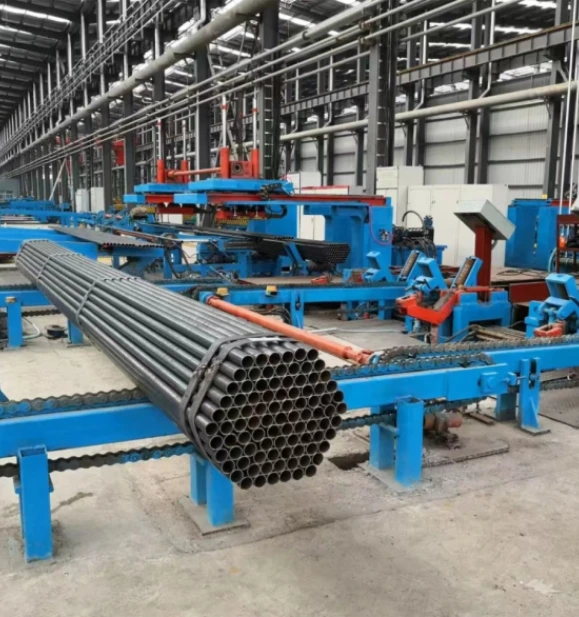profile forming machine
Profile Forming Machine An Overview
Profile forming machines are essential tools in modern manufacturing, especially in the construction, automotive, and aerospace industries. These machines are designed to create complex profiles from metal sheets, utilizing techniques such as bending, rolling, and stamping. By transforming flat materials into shapes that are not only functional but also aesthetically pleasing, profile forming machines play a crucial role in various applications.
What is a Profile Forming Machine?
A profile forming machine is a type of machinery used to create specific cross-sectional shapes from metal strips or sheets. The process typically involves feeding the material through a series of rollers or dies, which gradually shape the material into the desired profile. This continuous process can be adapted to produce a wide variety of profiles such as C-sections, Z-sections, U-channels, and more.
The machine's ability to produce uniform profiles with high precision makes it an invaluable asset in industries where material consistency and quality are critical. Profile forming machines can operate with different materials, including mild steel, stainless steel, aluminum, and more, further exemplifying their versatility.
Working Principle
The operation of a profile forming machine is relatively straightforward. Initially, a coil of metal material is unwound and fed into the machine. This raw material is then passed through a series of rollers that are precisely arranged to create the desired cross-section.
The rollers are usually designed according to the specific profile's geometry and can be adjusted to accommodate different material thicknesses and widths. The rollers operate in a sequential manner, meaning that as the material passes through each set of rollers, it is progressively shaped until it reaches its final form.
Once the desired profile has been achieved, the formed sections can be cut to length using an integrated shear or cut-off mechanism. This combination of forming and cutting in a single operation significantly improves efficiency and reduces wastage.
Applications of Profile Forming Machines
profile forming machine

Profile forming machines find applications in numerous sectors. In construction, they are used to manufacture framing materials for buildings and structural components. This includes everything from roof and wall panels to support beams and brackets.
In the automotive industry, profile forming machines produce components such as body rails, bumpers, and structural reinforcements that contribute to vehicle strength and safety. The aerospace sector also benefits from these machines, which can create lightweight yet sturdy profiles essential for aircraft design.
Moreover, the rise of renewable energy technologies has seen an increased demand for profile forming machines. They are crucial in producing components for wind turbines and solar panel frames, highlighting their importance in the transition to sustainable energy sources.
Advantages of Profile Forming Machines
The advantages of using profile forming machines are numerous. Firstly, they offer high precision and repeatability, ensuring that each profile is consistent with the last. This is essential for manufacturers who rely on high-quality parts that fit together perfectly.
Secondly, the speed of production is faster than many traditional machining processes, which allows for higher output in a shorter timespan. This increased efficiency can lead to reduced labor costs and faster turnaround times for projects.
Additionally, profile forming machines are often designed to minimize waste, as they utilize raw materials more effectively than some other manufacturing methods. The integration of cutting and forming processes helps to streamline operations and enhance productivity.
Conclusion
In conclusion, profile forming machines are a vital component of modern manufacturing. Their ability to produce high-precision, complex shapes efficiently and economically makes them indispensable across various industries. As technology advances, we can expect further innovations in profile forming machinery that will enhance their capabilities and applications even further, ultimately driving the evolution of manufacturing processes worldwide. The significance of these machines will continue to grow as industries seek more efficient and sustainable methods of production in the years to come.
-
High Frequency Straight Seam Welded Pipe Production Line-BzZhou Xinghua Machinery Equipment Manufacturing Co., LTD.|line pipe steel&welded gas pipeNewsJul.30,2025
-
High Frequency Straight Seam Welded Pipe Production Line-BzZhou Xinghua Machinery Equipment Manufacturing Co., LTD.|High Precision&Automated SolutionsNewsJul.30,2025
-
High Frequency Straight Seam Welded Pipe Production Line - BzZhou Xinghua Machinery Equipment Manufacturing Co., Ltd.NewsJul.30,2025
-
High Frequency Straight Seam Welded Pipe Production Line-BzZhou Xinghua Machinery Equipment Manufacturing Co., LTD.|Precision Welding, High EfficiencyNewsJul.30,2025
-
High Frequency Straight Seam Welded Pipe Production Line|BzZhou Xinghua|Precision Welding&EfficiencyNewsJul.30,2025
-
High Frequency Straight Seam Welded Pipe Production Line - BzZhou Xinghua|Precision Engineering&EfficiencyNewsJul.30,2025


